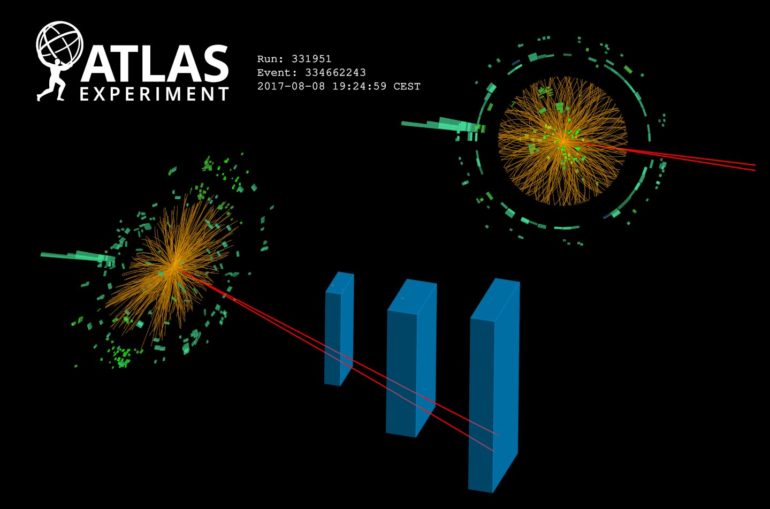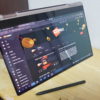Since the discovery of the Higgs boson in 2012, scientists in the ATLAS and CMS collaborations at the Large Hadron Collider (LHC) have been hard at work characterizing its properties and hunting down the diverse ways in which this ephemeral particle can decay. From the copious but experimentally challenging decay to b-quarks, to the exquisitely rare but low-background decay into four leptons, each offers a different avenue to study the properties of this new particle. Now, ATLAS has found first evidence of the Higgs boson decaying to two leptons (either an electron or a muon pair with opposite charge) and a photon. Known as “Dalitz decay,” this is one of the rarest Higgs boson decays yet seen at the LHC.
For this analysis, ATLAS physicists targeted a Higgs boson decay mediated by a virtual photon. In contrast to the familiar stable, massless photon, this virtual particle typically has a very small (but non-zero) mass and decays instantly to two leptons.
ATLAS physicists searched the full LHC Run 2 data set for collision events with a photon as well as two leptons whose combined mass was less than 30 GeV. In this region, decays with virtual photons should dominate over other processes that yield the same final state. ATLAS measured a Higgs boson signal rate in this decay channel that is 1.5 ± 0.5 times the expectation from the Standard Model. The chance that the observed signal was caused by a fluctuation in the background is 3.2 sigma—less than 1 in 1000.
With vast amounts of data expected from the upcoming High-Luminosity LHC program, studying rare Higgs boson decays will become the new norm. This will allow physicists to progress from reporting evidence for their existence, to confirming their observation and conducting detailed studies of Higgs boson properties—leading to ever more stringent tests of the Standard Model.
Observing the Higgs boson decay to a photon and a lepton pair will make it possible for physicists to study charge parity (CP) symmetry. CP symmetry is a way of saying that the mirror image of interacting particles, where particles are replaced by their antiparticles, should look exactly the same as the original interaction. This was a natural assumption until 1964, when physicists studying kaon particles noticed—to their great surprise—that this is not the case in the particle physics world. Since then, physicists have learned that violation of CP symmetry is a signature of the electroweak interaction and have incorporated it into the Standard Model.
But with the Higgs boson decaying into three particles, two of which are charged, physicists will be able to examine whether decays have a preferred direction—allowing researchers to improve their understanding of the origins of CP symmetry violation and perhaps even leading to hints for new physics beyond the Standard Model.
ATLAS Experiment searches for rare Higgs boson decays into a photon and a Z boson
More information:
Evidence for Higgs boson decays to a low-mass dilepton system and a photon in pppp collisions at s√s = 13 TeV with the ATLAS detector: atlas.web.cern.ch/Atlas/GROUPS … ATLAS-CONF-2021-002/
Citation:
ATLAS finds evidence of a rare Higgs boson decay (2021, February 9)
retrieved 9 February 2021
from https://phys.org/news/2021-02-atlas-evidence-rare-higgs-boson.html
This document is subject to copyright. Apart from any fair dealing for the purpose of private study or research, no
part may be reproduced without the written permission. The content is provided for information purposes only.



